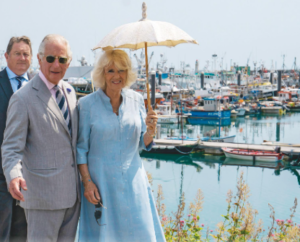“Travel for pleasure was once the preserve of young aristocrats taking the Grand Tour,” But in the early 19th century, a crucial change took place: the advent of steam power, combined with the “growing wealth of ordinary people”, meant that for the first time, what we would now call “holidays” fell within the reach of the middle classes. This is where Lucy Lethbridge begins her absorbing book, which charts the history of British tourism from its Victorian origins through to the package holiday boom in the 1970s.
Along the way, there are many detours – into such matters as the “discovery of sunbathing”, and the British love of spas. Rather like a bric-a-brac sale, Lethbridge’s book is “piled high with a jumble of anecdotes and facts, not all of them strictly relevant”, but most of them “fascinating”. It was a “showman called Albert Smith” who first whetted the public’s appetite for foreign travel by mounting wildly popular “panoramas and dioramas” in the mid-19th century, His most successful show, The Ascent of Mont Blanc, “opened in 1852 and ran for six years” – much to the horror of John Ruskin, who dismissed it as “Alps in a box”. Next came the first organised tours, overseen by the “fiercely evangelical” Thomas Cook. One early excursion, from Leicester to Loughborough, concluded with Cook exhorting his 500 passengers to give “one cheer more for Teetotalism and Railwayism”.
A similar sense of “moral purpose” imbued the tourism industry well into the 20th century, The “pioneer” holiday camps of the Edwardian period, with their ethos of “muscular health”, couldn’t have contrasted more starkly with “our modern Costa Brava”. The real joy of this book lies in its plethora of “pleasingly nerdy” detail,Lethbridge describes how the Pakamac raincoats – so crucial to the caravanning boom of the 1950s – were “outgunned in 1971 by the arrival of the cagoule, with its crucial and capacious front pocket”. And there are intriguing parallels between “then and now”: just as today we have Instagram filters, so the Victorians had their own “curious accessory” – a “plano-convex mirror” known as the Claude glass, which lent a “pleasing and softened tinge” to the scenery. Lethbridge is a meticulous researcher – and is good on the “intricacies of British society”. Wide-ranging and original, Tourists is a “highly satisfying read”.

